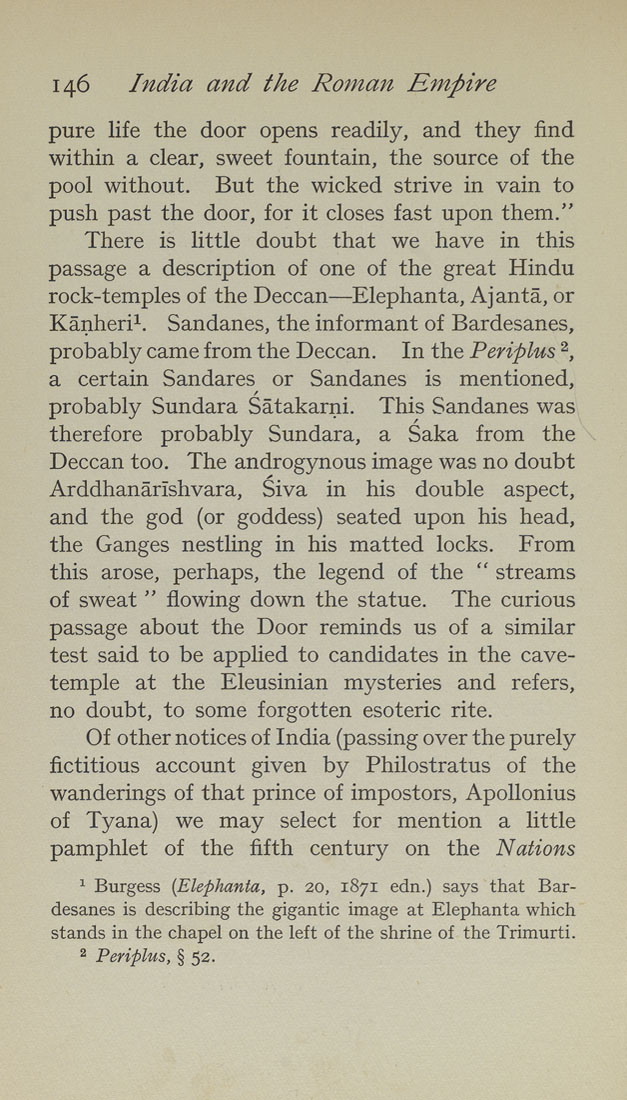146 India and the Roman Empire
pure life the door opens readily, and they find
within a clear, sweet fountain, the source of the
pool without. But the wicked strive in vain to
push past the door, for it closes fast upon them."
There is little doubt that we have in this
passage a description of one of the great Hindu
rock-temples of the Deccan—Elephanta, Ajanta, or
Kanheri^. Sandanes, the informant of Bardesanes,
probably came from the Deccan. In the Periplus ^,
a certain Sandares or Sandanes is mentioned,
probably Sundara Satakarni. This Sandanes was
therefore probably Sundara, a Saka from the
Deccan too. The androgynous image was no doubt
Arddhanarishvara, Siva in his double aspect,
and the god (or goddess) seated upon his head,
the Ganges nestling in his matted locks. From
this arose, perhaps, the legend of the " streams
of sweat " flowing down the statue. The curious
passage about the Door reminds us of a similar
test said to be applied to candidates in the cave-
temple at the Eleusinian mysteries and refers,
no doubt, to some forgotten esoteric rite.
Of other notices of India (passing over the purely
fictitious account given by Philostratus of the
wanderings of that prince of impostors, Apollonius
of Tyana) we may select for mention a little
pamphlet of the fifth century on the Nations
^ Burgess {Elephanta, p. 20, 1871 edn.) says that Bar¬
desanes is describing the gigantic image at Elephanta which
stands in the chapel on the left of the shrine of the Trimurti.
2 Periplus, § 52.
|








